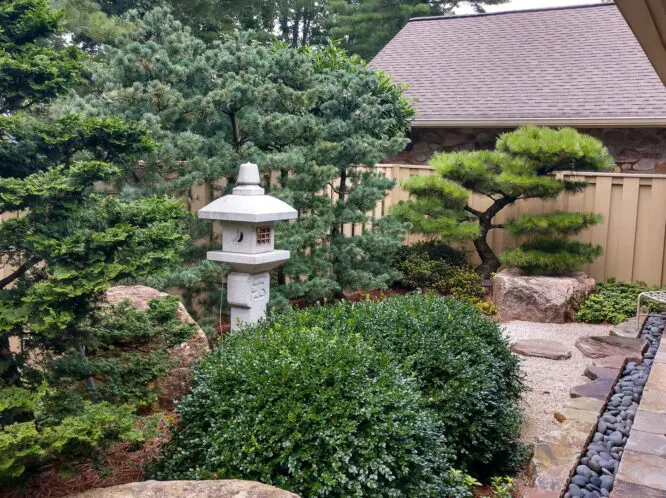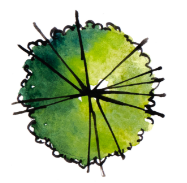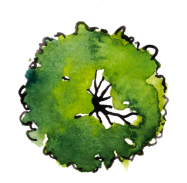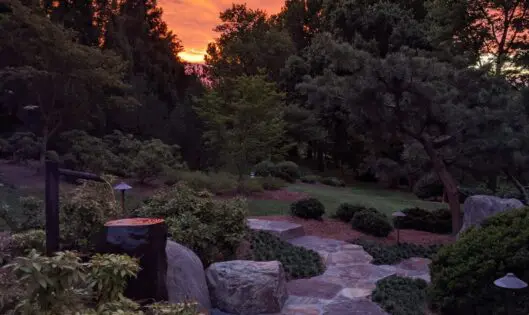The Gardener's Journal
How To Hire A Garden Designer

Developing a garden can be a fun and rewarding process. Many people seek a professional to help them turn their garden dreams into reality. In this way, costly mistakes are avoided and the learning curve is shortened. Most importantly, since plants take time to grow to a pleasing maturity, starting right can save years of frustration.
At Hanselman Landscape, we have found that clients most enjoy the garden building process when they are fully engaged as partners. Here are several recommendations to consider when hiring a garden designer.
1. Develop your garden vision
Find a source of inspiration, think about your goals, and be ready to communicate them. At this point, it is more important to understand your hopes and motivations than to worry about the details or logistics.
You should also begin to develop a budget, so that you can have a realistic conversation about costs with your designer. Realize that a garden landscape is not a one-time expense, but rather an ongoing and rewarding investment. An experienced designer understands the importance of regular garden maintenance, and can discuss ongoing costs for the garden they propose. To stretch budgets, most people choose to develop their garden in phases.
2. Decide between “design-build” and “design-only” methods
“Design-build” firms integrate design, construction, and maintenance services. “Design-only” means an individual or company provides consultation and design, while the installation is done by another firm.
Consider the integrity and ability of the landscape designer, as well as the experience and skill of the installation company. A risk with “design-build” is that the designer might lower expectations in the design stage in order to “win the bid” and ensure feasibility when the time comes to build. A risk with “design-only” is that practicality might be a problem when the design is implemented by another contractor. This can lead to fingers pointing both ways, with alternate parties blaming failures on “poor design” or “poor installation.”
We typically work in a “design-build” capacity. Because our team stands behind the entire process, we can ensure a high level of quality for our clients.
3. Interview the prospective design partner
Stellar references are the hallmark of a trusted designer. In addition, ask to see examples of projects completed in the past. If you have time, in-person visits are best, but you can learn from a series of photos as well. Look specifically for gardens that have matured over the years. Are the plants maturing beautifully, showing good selection and careful tending? What is the condition of the hardscape surfaces, such as pavers, stones, and bricks? Consider it a red flag if you are only shown examples of newly-installed gardens or referred to only recent clients.
4. Evaluate the designer’s perspective
An experienced garden designer should be able to competently “listen” to the site. In other words, a good designer will thoughtfully and skillfully consider several parameters: the natural state and boundaries of the site, the norms of the surrounding community, the aesthetics of your home’s design, your preferences and dreams, and your budget.
Look to your designer to answer the following questions in a way that makes sense to you:
- How will this landscape design look from inside the house (through a window vs. from the street)?
- Will your garden be viewed as you “walk-through” or as a “picture” from one setting?
- Will the structures and spaces be the right size and type for your needs?
- How will rainwater move through the garden and keep your home dry?
- What will this garden look like in 10 years or more? Will it keep its value and beauty?
- How will the landscape appear in each season?
- What are the costs involved and how can they be managed over time?
OUR GARDEN DESIGN PROCESS

Explore
Share your goals, ideas, and project budget and we will begin to survey and plan your garden

Design
We will consider all your primary view perspectives, both inside and out as we design your garden

Build
Your garden dream will begin to take shape by the hands of our highly skilled craftsmen and landscapers

Enjoy
Your garden dream will begin to take shape by the hands of our highly skilled craftsmen and landscapers



